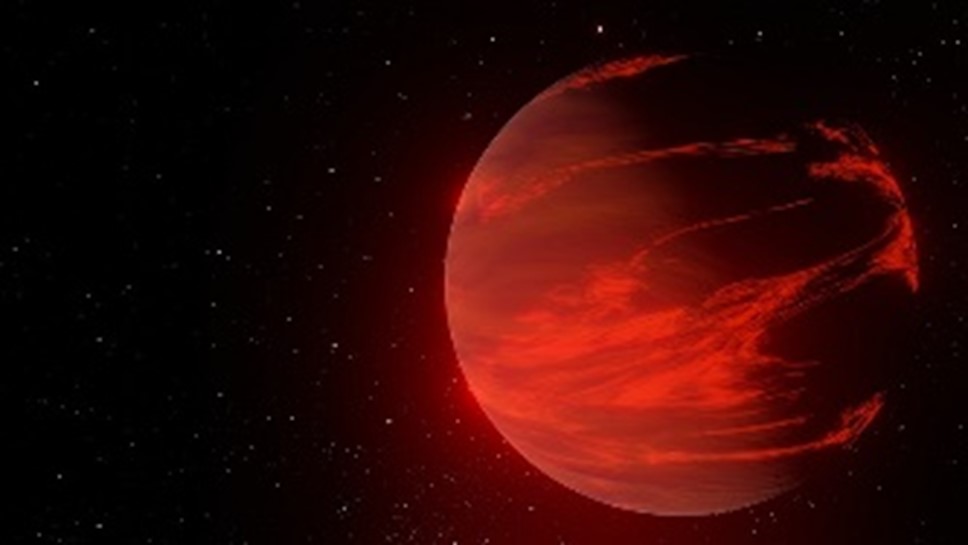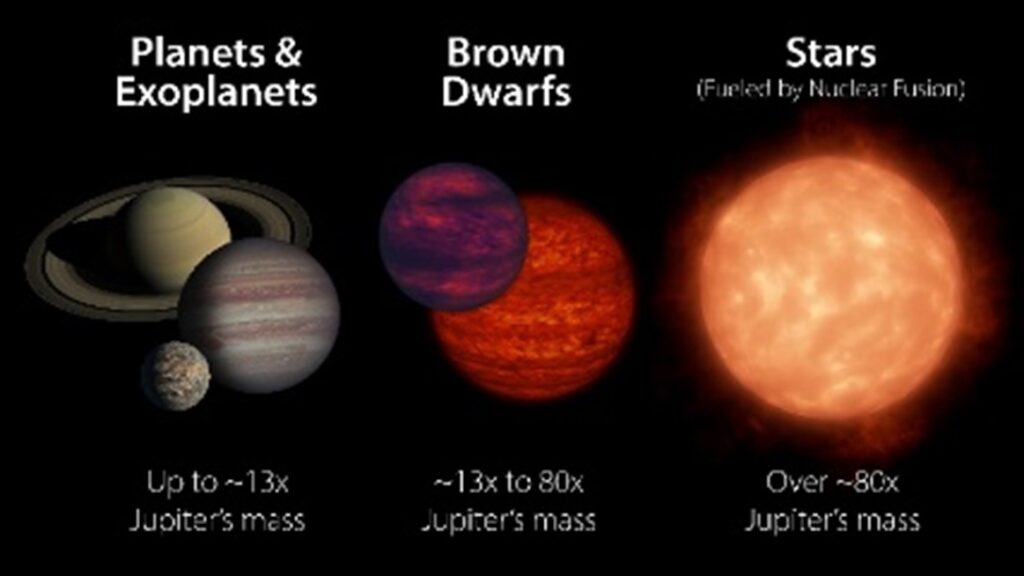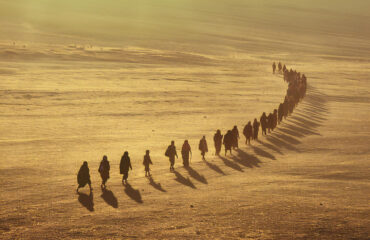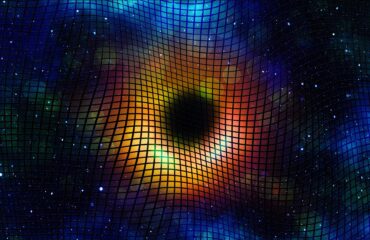
Brown dwarfs are also referred to as failed stars. Image: KKolaczynski.
By Mariana Meneses
Backyard Worlds: Cool Neighbors empowers citizens to search for brown dwarfs in our solar system.
In another TQR article, we featured a number of citizen science projects, including Backyard Worlds: Planet 9, which led to the discovery of many new binary-star systems in which low-mass stars partner up with a so-called “failed star,” or brown dwarf.
Now, Dr. Aaron Meisner, NOIRLab astronomer and co-founder of Backyard Worlds, and his team are advancing a new project, specifically designed to search for the ‘failed stars’ living closest to us. The upcoming citizen science project, called Backyard Worlds: Cool Neighbors, aims to optimize the search for these astronomical objects.
“Brown dwarfs are small, intrinsically dim, and emit largely in infrared light […] All of these factors combine to make them both difficult to detect and easy to miss”, said Dr. Meisner.
In terms of mass, these celestial objects are larger than the most massive gas giant planets like Jupiter, but smaller than the least massive hydrogen-fusing stars. For comparison, brown dwarfs can have masses of between approximately 13 and 80 times that of Jupiter. As a result, they have similarities with both stars and planets.
“The atmospheres of brown dwarfs are very similar to those of giant exoplanets but can be characterized in detail without the glare of a much brighter host star interfering. These brown dwarf atmospheres show strong signatures of water and methane, which are important molecules for the development of the organic compounds we see on Earth. Some brown dwarfs may even be rogue planets that were ejected from their original star system! Exploring these objects may help us learn more about the formation of other star systems and what compounds are prevalent throughout the universe” (Backyard Worlds website).
“A rogue planet (also termed a free-floating planet (FFP), interstellar, nomad, orphan, starless, unbound or wandering planet) is an interstellar object of planetary-mass which is not gravitationally bound to any star or brown dwarf. Rogue planets originate from planetary systems in which they are formed and later ejected. They can also form on their own, outside a planetary system. The Milky Way alone may have billions to trillions of rogue planets” (Wikipedia).

Brown dwarfs are more massive than planets but not quite as massive as stars. Image: NASA/JPL-Caltech.
The new project differs methodologically from the first in three main ways.
As the researchers explain in the project’s website, in Backyard Worlds: Planet 9, their intent was to search for a hypothesized planet which would be moving very quickly, and so the images are analyzed to exclude any objects, such as stars and galaxies, that are not moving fast enough – which can be determined by the changes in brightness over time. Since brown dwarfs move more slowly, the images to be analyzed in Backyard Worlds: Cool Neighbors show the sky with all the existing stars and galaxies.
The search for brown dwarfs in Cool Neighbors is also more targeted and allows for more detailed investigation. While the images in Planet 9 were randomly picked, in the new project, the images of the sky are pre-selected by machine learning algorithms that search for potential candidates. This way, the citizen scientists will dedicate themselves to visually inspect and confirm the presence or absence of brown dwarfs in the images, getting a closer or more detailed perspective.
Cool Neighbors has more than double the amount of data to work with: nine years-worth of observations, against four in Planet 9, which will allow the researchers to “uncover a greater number of faint and/or subtly-moving brown dwarfs as we can observe them traveling over a longer period,” explains the website.
The data comes from NASA’s Wide-field Infrared Survey Explorer (WISE), which was launched on December 14, 2009, decommissioned in February 2011, and then reactivated as NEOWISE in September 2013 with the goal of imaging the entire sky in the infrared light spectrum. The WISE has already allowed many discoveries on the origins of exoplanets, stars and galaxies. And with Backyard Worlds: Cool Neighbors, it could potentially unravel many more secrets of our universe.
“As brown dwarfs have relatively low surface temperatures, they are not very bright at visible wavelengths, emitting most of their light in the infrared” (Wikipedia).
Failed stars are considered to be very rare.
For instance, among the billions of galaxies detected by WISE, only a few thousand objects turned out to be brown dwarfs. The aim of the project is to learn more about giant exoplanet atmospheres, how stars are born, and how the processes behind the birth of stars have shaped our galaxy.
In a 2022 article, the team explains that studying these substellar objects has the potential to yield “fundamental insights about planetary atmospheres and the process of star formation at low masses.” The WISE dataset offers the possibility to detect the least luminous brown dwarfs.
“Discovering extreme brown dwarfs will enable the most exceptional and diverse set of isolated exoplanet analogs to be characterized spectroscopically during JWST’s lifetime,” reads the article, with reference to the James Webb Space Telescope which sees light in the mid-range infrared spectrum.

Astronomer and brown dwarf researcher Dr. Aaron Meisner
Citizen science projects allow researchers to go through huge amount of data and make use of the unique capacity of the human brain to find hidden patterns. This has the potential to accelerate the pace of discoveries being made in our time. If you are interested in joining Dr. Meisner’s team, you can learn more and get started at their website. And, who knows, maybe this year you will make a historic discovery.
In an interview for the first episodes of The Quantum Record’s new podcast, The Quantum Feedback Loop, Dr. Meisner was asked about what the ‘humans’ are adding to this project, which is so data and technologically intense. Here is a preview of the interview:
James Myers: What is the human adding to this aspect? Is it pattern recognition or is it something else?
Dr. Meisner: Yeah, I think there’s a couple aspects to that. One of them is just the simple pattern recognition of the fact that we’re looking for moving objects in time series movies, which is something that humans are really good at. (…) There’s also just a huge acceleration factor that comes from doing this crowdsourcing approach. (…) But then the other side of it, which is a different kind of pattern recognition. What we found is that often the most interesting discoveries aren’t exactly what we thought we were looking for. And so it really helps to have that human element of someone going in and saying, well, this looks like it’s moving, but there’s also this, which is weird, which we’d never seen before. And so that can be really useful in terms of discovering the unexpected.
Backyard Neighbors: Cool Neighbors officially launched on June 27, 2023. If you ever dreamt of discovering a celestial body, what are you waiting for?
Do not miss out on The Quantum Feedback Loop episodes for more in-depth discussions with some of our featured scientists and enthusiasts.
Looking for more fascinating reads? Don’t forget to explore these TQR articles:
- Searching For Martian Life with X-Ray Crystallography
- Technology Fuels Advances in Citizen Science
- Time, Black Holes, and the Search for the Theory of Everything
- The Search for Life In the Solar System’s Ocean Worlds
- James Webb Space Telescope Advances Search for Signatures of Life



